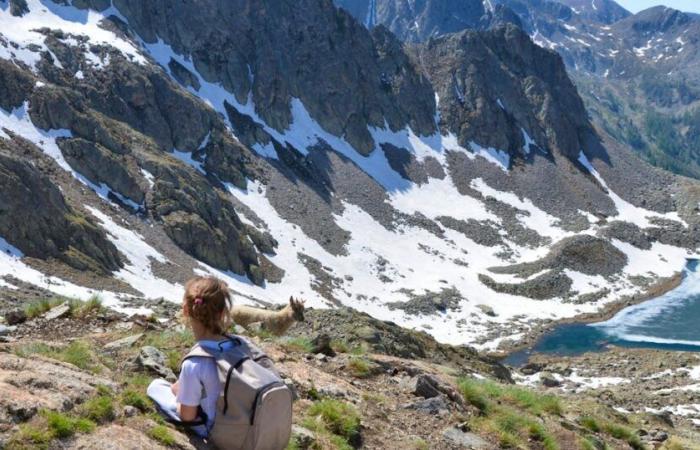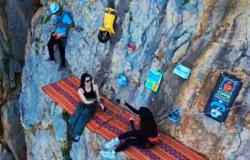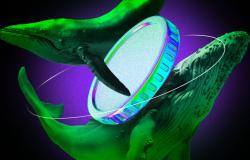During a summer hike in the Italian mountains, a hiker made an exceptional find. It brought to light a 280 million year old ecosystem, revealing one of the richest paleontological sites in the region.
IMAGO/Depositphotos
Claudia Steffensen, a local hiker, discovered by chance last summer the first trace of a prehistoric ecosystem in the Orobie Valtellinesi nature park in northern Italy. She spotted fossilized footprints on a rock in the Ambria Valley.
Traces identified as belonging to a prehistoric reptile, paving the way for the discovery of one of the richest paleontological sites in the region!
“It looked like a slab of cement”
“Last summer and we wanted to escape the heat, so we went to the mountains. On the way back, I put my foot on a rock, which seemed strange to me because it looked more like a cement slab. I then noticed these strange circular designs with wavy lines. I looked closer and realized they were footprints,” Claudia Steffensen told the Guardian.
After an in-depth analysis by Cristiano Dal Sasso, a paleontologist at the Milan Natural History Museum, and an international team of specialists, the site revealed hundreds of other footprints belonging to at least five different animal species dating back 280 million years. years.
Prints of skin, seeds and raindrops!
These fossils include traces of reptiles, amphibians, insects, as well as rare items like skin impressions, seeds and even fossilized raindrops. “The very fine grain of the sediments made it possible to preserve impressive details, offering a unique insight into prehistoric life,” underlines Lorenzo Marchetti, ichnologist.
The reduction in ice cover due to climate change has played a crucial role in uncovering these buried remains. Researchers, supported by spectacular helicopter operations, have recovered some of the most valuable fossils.
An open-air laboratory
“These prints bear witness to an era marked by climatic conditions similar to those we experience today,” adds Cristiano Dal Sasso.
Orobie Valtellinesi Park aims to transform this area into an open-air laboratory, with research underway to map fossils and deepen the understanding of this vanished ecosystem. The Milan Natural History Museum is already exhibiting some of the relics discovered and promoting this unique heritage.






